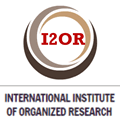An infrequent case of aneurysms of both superficial temporal arteries. A case report
Keywords:
superficial temporal artery, arteriovenous fistula, aneurysmAbstract
Introduction: superficial temporal artery aneurysms have been reported very infrequently in world literature. This rare condition, when it occurs, is closely associated with trauma, aneurysms in other arteries, Marfan syndrome, giant cell arteritis, which is the most common form of systemic vasculitis in adults over 50 years of age and, very rarely, atherosclerosis. If superficial temporal aneurysms are rare, exceptional are bilateral aneurysms. Case report: an unreported case is presented in the literature of a patient without a traumatic history, in which bilateral vascular dilations of both superficial temporal arteries were found. Conclusion: whenever there is a mass in the parietal area, it is mandatory to explore all vascular paths and palpate the temporal arteries thoroughly to look for inflammatory manifestations or the decrease or loss of pulses.Downloads
References
1. Borchers AT, Gershwin ME. Giant cell arteritis: A review of classification, pathophysiology, geoepidemiology and treatment. Autoimmun Rev [Internet]. 2012 May [citado ];11(6-7):A544-54. Disponible en: https://www.ncbi.nlm.nih.gov/pubmed/22285588
2. Thompson GB, Brown RD, Amin-Hanjani S, Broderick JP, Cockroft KM, Connolly ES, Duckwiler GR, et al. Guidelines for the management of patients with unruptured intracranial aneurysms: A guideline for healthcare professionals from the American Heart Association/American Stroke Association. Stroke [Internet]. 2015 Aug [citado ];46(8):2368-2400. Disponible en: https://www.ncbi.nlm.nih.gov/pubmed/26089327
3. Munarriz PM, Gómez PA, Paredes I, Castaño-Leon AM, Cepeda S, Lagares A. Basic principles of hemodynamics and cerebral aneurysms. World Neurosurg [Internet]. 2016 Apr [citado ];88:311-319. Disponible en: https://www.ncbi.nlm.nih.gov/pubmed/26805691. https://doi.org/10.1016/j.wneu.2016.01.031
4. Miyamotto M, Matheus SE, Granella VH, Angelo BZ, Marciniak B M, Hennig PH, et al. Pseudoaneurisma da artéria temporal superficial: relato de três casos. J Vasc Bras [Internet]. 2018 Jan-Mar [citado ];17(1):76–80. Disponible en: https://www.ncbi.nlm.nih.gov/pmc/articles/PMC5990264/. https://dx.doi.org/10.1590/1677-5449.009517
5. Kermani TA, Warrington HJ, Cuthbertson D, Carette S, Hoffman GS, Khalidi NA, et al. Disease relapses among patients with giant cell arteritis: A prospective, longitudinal cohort study. J Rheumatol [Internet]. 2015 Jul [citado ];42(7):1213-7. Disponible en: https://www.ncbi.nlm.nih.gov/pubmed/25877501
6. Weyand CM. Giant-cell arteritis and polymyalgia rheumatica. N Engl J Med [Internet]. 2014 Jul [citado ];371(1):50-57. Disponible en: https://www.ncbi.nlm.nih.gov/pmc/articles/PMC4277693/
7. Rinkel GJE, Algra A, Greving JP, Vergouwen MDI, Etminan N. PHASES and the natural history of unruptured aneurysms: science or pseudoscience? J Neurointerv Surg [Internet]. 2017 Jun [citado ];9(6):618. Disponible en: https://www.ncbi.nlm.nih.gov/pubmed/27091751. https://doi.org/10.1136/neurintsurg-2016-012436
8. Álvarez HM, Bravo MM, Arancibia NL, Chacón GH. Pseudoaneurisma de la arteria temporal: Reporte de un caso y revisión de la literatura. Rev Chil Cir [Internet]. 2006 Dic [citado ];58(6):469-72. Disponible en: https://scielo.conicyt.cl/scielo.php?script=sci_arttext&pid=S0718-40262006000600013
9. Walker MT, Liu BP, Salehi SA, Babve S, Batjer HH. Superficial temporal artery pseudoaneurysm: Diagnosis and preoperative planning with CT angiography. Am J Neuroradiol [Internet]. 2003 Jan [citado ];24(1):147-150. Disponible en: https://www.ncbi.nlm.nih.gov/pubmed/12533345
10. Silva AJD, Santos RV, Amato SJTA, Amato ACM. Aneurisma verdadeiro pós-traumático de artéria temporal. J Vasc Bras [Internet]. 2016 Apr-Jun [citado ];15(2):165–167. Disponible en: https://www.ncbi.nlm.nih.gov/pmc/articles/PMC5829713/. https://dx.doi.org/10.1590/1677-5449.006615
11. Morillo MJ, Mora J, Soler A, García-Campos JM, García-Fernández I, Sánchez P, et al. Retinal autofluorescence imaging in patients with pseudoxanthoma elasticum. Arch Soc Esp Oftalmol [Internet]. 2011 Jan [citado ];86(1):8-15. Disponible en: https://www.ncbi.nlm.nih.gov/pubmed/21414524. https://doi.org/10.1016/j.oftal.2010.11.019
12. Mora OR, Pozo UC, Barría MC, Beltrán SMA, Barrera CR, Clericus A, et al. Un caso infrecuente de aneurisma ateroesclerótico de la arteria temporal superficial. Rev Chil Cir [Internet]. 2008 Oct [citado ];60(5):429-33. Disponible en: https://scielo.conicyt.cl/scielo.php?script=sci_arttext&pid=S0718-40262008000500011&lng=pt&nrm=iso&tlng=es
13. Santos Pérez LA, González Fernández E, Milián Hernández C. Sindrome de Marfan. Reporte de un paciente. Acta Med Centro [Internet]. 2015 [citado ];9(4):46-51. Disponible en: http://www.revactamedicacentro.sld.cu/index.php/amc/article/view/292/448
Published
How to Cite
Issue
Section
License
Authors who have publications with this journal agree to the following terms:
- Authors will retain their copyright and assign to the journal the right of first publication of their work, which will simultaneously be subject to a Creative Commons License / Attribution-Noncommercial 4.0 International (CC BY-NC 4.0) that allows third parties to share the work as long as its author and first publication in this journal are indicated.
- Authors may adopt other non-exclusive license agreements for distribution of the published version of the work (e.g., depositing it in an institutional repository or publishing it in a monographic volume) as long as the initial publication in this journal is indicated.
- Authors are allowed and encouraged to disseminate their work through the Internet (e.g., in institutional telematic archives or on their web page) before and during the submission process, which can produce interesting exchanges and increase citations of the published work. (See The effect of open access).





 december 15 2025
december 15 2025


